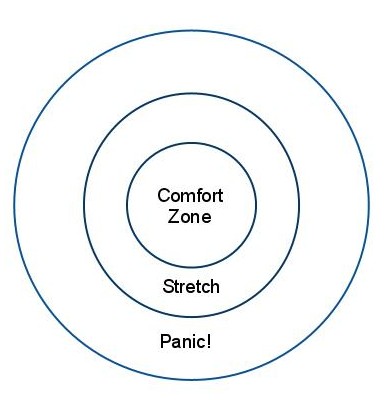It’s Coaching But …
Have you ever had a situation where you know by your clients stance or tone of voice that there is an unspoken “but”? Something that they may not have verbalised out loud “but” is obviously a thought they were focusing upon at that moment.
So what do you do as a coach?
If you are a regular reader, you probably won’t be the slightest bit surprised when I emphasise that this is about a choice you can make to suite the individual client you are working with and your own style.
In this post I’ll discuss 3 different potential approaches and invite you to consider the circumstances and your perspective about each one. I also invite you to consider other approaches you could use when you can see/hear an unspoken “but”.
Approach 1 – Is that “but” important/getting in the way?
Just because you have heard or seen that unspoken “but” does not automatically mean that you have to ask what that “but” is all about. For me, sometimes effective coaching is actually about knowing when to stop, get out of the clients way and let the client take action.
I will admit that generally if I’ve heard or seen an unspoken “but” that I will explore this in more depth. However, occasionally I can see/hear that “but” when it is obviously in response to something that isn’t going to get in the way of the clients next step.
For example, imagine that a client is happy and willing to commit fully to taking a first step on something that they have been procrastinating about starting. In preparation for building momentum for taking further steps I may say something that presupposes future steps will then be easier etc.
I know that people can change in an instant. Just because someone has one perspective before taking an action does not mean that they will still have that same perspective afterwards.
The very task of successfully completing that first action, particularly if it was easier than they initially imagined, may naturally lead to them believing that further steps will be easier.
Challenging the unspoken “but” may not be necessary and may actually have taken longer to get the same result.
Approach 2 – Change “but” to “and”
Get the client to tell you what that “but” is so that it turns from being unspoken to spoken. This then gives you the opportunity to work that “but”!
The earliest I’ve seen this technique mentioned is in Dale Carnegie’s book “How to win friends and influence people.” (First published in 1936). What is your natural response when you hear the word “but”?
Most people immediately ignore what was at the start of the sentence and just focus upon the bits that follow that “but”. So if the bit that follows that “but” is what the client perceives as the problem they focus generally just on the problem.
So, for example: Imagine that a client says
“I did a presentation that my clients loved “BUT” I know it could have been better.”
Their focus is most likely to be on “I know it could have been better” rather than acknowledging that their clients loved the presentation.
There are many different directions you could take a coaching session if a client was to say that to you. One gentle way of starting to shift someone’s perception is to repeat back to them what they said replacing the word “BUT” with the word “AND”.
So this example would become
“You did a presentation that your clients loved “and” you knew it could have been even better.”
Can you see the difference between the 2 sentences?
Approach 3 – Turn the “but” on its head.
Again this approach uses the language that your clients used and shifts their focus. It presumes that you have established what was that previously unspoken “but”.
Approach 2 has already talked about how most people focus on the bit after the word “BUT”, so this approach uses it as an advantage.
As you’ll see with the example that follows, this is an approach that is actually much easier in practice then it appears first appears with an explanation! With this approach we swap everything that the client said in the sentence before they used the word “BUT” for everything after.
For example, if we still use
“I did a presentation that my clients loved “BUT” I know it could have been better”
Using this approach we could say:
“You know it could have been better “BUT” you did a presentation that your clients loved.”
The “but” may reveal a limiting belief that you may want to challenge. As I began this post in saying, there are many other directions that you can choose to take the coaching session.
How do you generally respond to those unspoken “but’s”?
Have you used any of the above approaches yourself?
As always, I invite you to submit a comment below.
